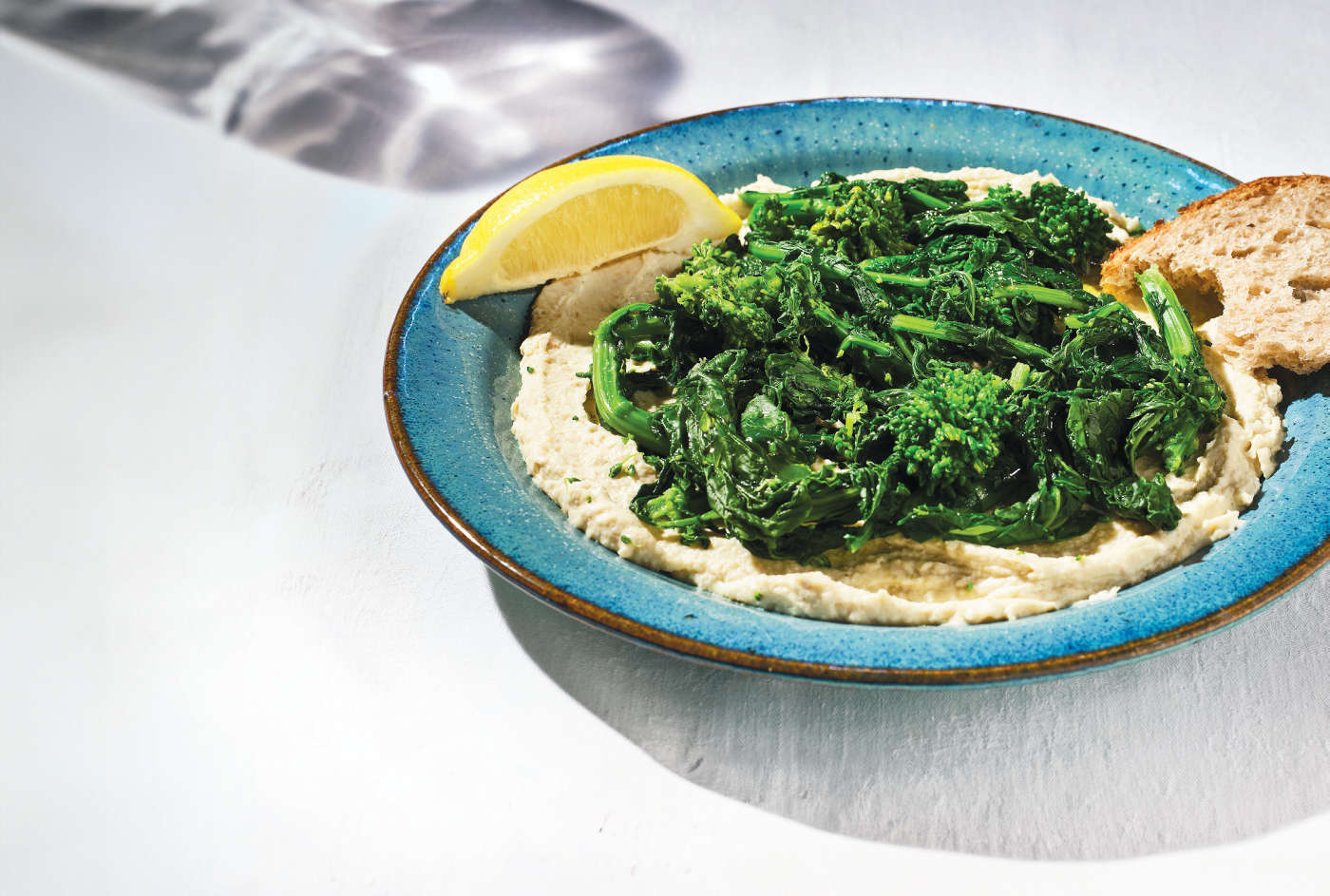
Dried Fava Puree with Broccoli Rabe
Harvesting dried peas and beans is pretty much the same task whether one is saving the seeds to plant the next year or to hold and use as dried peas and beans in cooking. Fresh favas are highly coveted in season, but dried favas are also incredible when shelled, cooked, and pureed to serve as a protein-rich base for cool-season greens such as broccoli rabe. This dish is amazing served with roasted meats, or with a crusty loaf of bread as a meat-free supper.A squeeze of lemon and a fresh drizzle of olive oil before serving gives it a sumptuousness fit for royalty. If you have not saved your own beans, dried favas can be found at specialty markets and Middle Eastern grocers. Fava beans have a distinct flavor that is ideal for this dish, but you can also use dried lima beans or cannellini beans if they are not available.
Ingredients
- 1 pound dried fava beans
- Kosher salt
- ¼ cup milk
- 2 slices good quality bread, crust removed
- ⅔ cup olive oil, divided, plus more for drizzling on top, if desired
- 1½ pounds broccoli rabe
- 1–2 cloves garlic, peeled and slightly crushed with side of knife
- Juice of ¼ lemon
- Freshly ground pepper, optional
Instructions
- Place beans in a bowl and cover with water up to 2 to 3 inches above top of beans. Drain the following morning, set in a pot, cover with water, and bring to a boil. Cook for 5 to 10 minutes.
- Drain beans and peel away the outer skin with a knife. (Some beans can be purchased split and peeled and can be used without the previous steps other than the soaking.)
- Put beans back in pan and cover with cool water. Bring to a simmer, cover at medium heat with 2 tablespoons of salt, and cook for 30 minutes, until they are reduced to a pulp. If water cooks off during the process, add more water as needed, but when the beans are cooked, the water will have evaporated off.
- Simmer but do not boil milk in a small pan, remove from heat and add bread, mashing it with a fork until it has a smooth consistency. Drain any excess milk from bread. Set aside.
- Puree cooked beans in a food processor or food mill. Add a half cup of the olive oil and the bread and mix until smooth. If mixture is too loose, heat it to reduce any liquid. Set aside.
- Trim broccoli rabe and remove any woody stems. Place 3 to 4 cups of water in a lidded saucepan over medium heat and, when water boils, add 1 to 2 tablespoons of salt and the broccoli rabe. Cover and cook just until greens become tender, approximately 3 minutes. Remove from heat and drain, squeezing out as much water from the rabe as possible. Chop the rabe if desired. The dish can be held at this point until it is time to prepare the meal. The beans can be kept warm or allowed to reach room temperature. Before serving, add 2 to 3 tablespoons of olive oil to a skillet and add garlic. Set pan over medium heat until garlic turns light gold, remove garlic and discard, add rabe and cook for 5 to 6 minutes. Add salt to taste.
- Spread the fava puree over the bottom of a low flat platter and distribute rabe over the top. Top with olive oil, lemon, and pepper, if you like.
Notes
PHILIPPE JEANJEAN’S SUGGESTED WINE PAIRING
This one is challenging because of the bitterness and earthiness of the broccoli rabe. However, the fava puree tones it down. A light red with a fruit-forward profile will work best. Please consider a Beaujolais Village or Nouveau (the 2024 vintage will be available in the U.S. by mid-November), a Cabernet Franc from the Loire Valley, or a Carmenère from Chile.